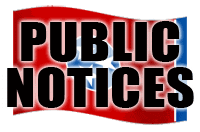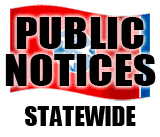By MIKE VINSON
With theaters across the Globe entertaining viewers with super-action heroes such as The Hulk, Iron Man, Superman, Batman, Kung Fu Panda, and others, allow me to introduce you to a couple of real-life, flesh & bone action heroes.
Born December 24, 1809, in Richmond, Kentucky, Christopher Houston "Kit" Carson, mountain man, fur trapper, scout, military officer, and Indian fighter, would become--and continues to be--an American Frontier legend.
Born November 26, 1853, in Henryville, Canada East, William Barclay "Bat" Masterson became an indelible American Frontier legend with a resume that included: gambler, lawman, buffalo hunter, Indian fighter, sports writer, and personal friend to U.S. President Theodore "Teddy" Roosevelt.
Though I could find no evidence substantiating Kit Carson and Bat Masterson ever crossed paths, I found overwhelming evidence these two gun-totin' tough guys did engage in shoot-outs at the same location, albeit in different decades, with a common foe. What I'm referring to are the not-so-well-known "Battles of Adobe Walls."
So goes the story ...
Adobe Walls was built sometime around 1843 in Hutchinson County, Texas, near the Canadian River ("Texas Panhandle" area), as a trading post for buffalo hunters and trappers operating in, and passing through, the area. The original building was made from wooden logs. However, the log structure was soon replaced by a more durable structure of "adobe" bricks, thus the name "Adobe Walls." Local Indians, the Comanche and the Kiowa, in particular, were of the opinion this territory belonged to them. Therefore, feeling the "pale faces" had wrongfully encroached on Indian space, the Indians carried out sporadic raids on the trading post.
Convinced that "peril trumped profit," the proprietor of Adobe Walls, William Bent, shut down the operation in 1849. It wasn't long before the adobe bricks fell out of place and scattered about, leaving a scant, skeletal semblance of the original trading post. The place, essentially, was forgotten until around 1864.
Because the Civil War raged hot during this time frame, 1861-1865, many working-family men were called to fight for the Union and the Confederacy. With the male gender absent, Indians attacked white settlements at will down in Texas and Mexico. U.S. military command in New Mexico decided to hunt down and punish the attacking Indians, hoping to replace their aggressiveness with fear. Already-famous Kit Carson was chosen to lead approximately 350 soldiers, along with 65-70 Indian scouts, against the warring Indian factions. Carson brought along two howitzer cannons for extra firepower.
November 25, 1864, Carson and his troops attacked a Kiowa Indian camp, located near the abandoned Adobe Walls trading post. However, the course of battle quickly shifted when, reportedly, more than 1,000 Indians came out of seemingly nowhere--outnumbering Carson's outfit by some 3-1--forcing Carson and his men to pull back.
With Carson's and his men's lives hanging in the balance, Carson put the powerful howitzers into action: The big cannons' ear-deafening booms followed by volleys of annihilative shells--which, some claim, weighed around 100 pounds--struck fear in the Indians and forced them to retreat beyond howitzer range. Next, the Indians set brush fires in an attempt to flush the American soldiers out in the open. However, the wily, guerilla-warfare-minded Kit Carson set "counter fires" that "negated" the fires set by the Indians.
For the most part, the next twenty-four hours proved uneventful, a "standoff," some say. October 27, 1864, Kit Carson withdrew his troops from Adobe Walls. Though both the Kiowa Indians and Kit Carson claimed victory, Carson proved, from a combat perspective, that superior firepower could withstand attack from an enemy of a much larger number.
Ten years later, an adventurous, 20-year-old Bat Masterson was amongst a group of buffalo hunters camped out near the original Adobe Walls site. Again, local Indians took umbrage with the white man hunting and killing buffaloes on Indian turf, the buffalo being a valuable asset for the Red Man: a source of food, shelter, clothing, weaponry, etc.
Though some violent skirmishes between the Indians and the white buffalo hunters preceded, the situation escalated on June 27, 1874, when a coalition of local Indians, led by a Comanche named Quanah Parker, attacked the hunters, which initiated a fierce, five-day, close-quarters battle. Because the Indians, again, greatly outnumbered the enemy, the "Indians didn't leave, and the whites couldn't escape." As legend has it, the "Second Battle of Adobe Walls" ended when a renowned sharpshooter named Billy Dixon, using a single-shot "Sharps Rifle" (probably a .50 caliber), picked off an Indian from over 1,000 yards away. The incredible, long-distance shot so discouraged the Indians, they ceased their attack and left.
Though Bat Masterson is credited with fighting bravely at the Second Battle of Adobe Walls, in 1874, many Old West historians contend his true legend was born a few years later, when, around 1877, he befriended and served as a deputy (in Dodge City, Kansas) with iconic Old West legend Wyatt Earp, of "Gunfight at the O.K. Corral" fame.
Regardless the specifics, Kit Carson and Bat Masterson remain true flesh & bone action heroes!






